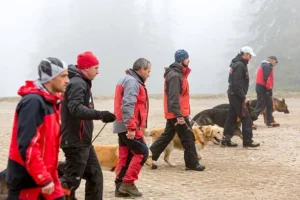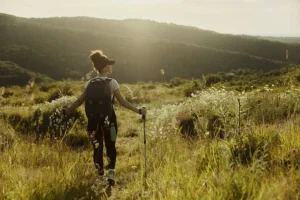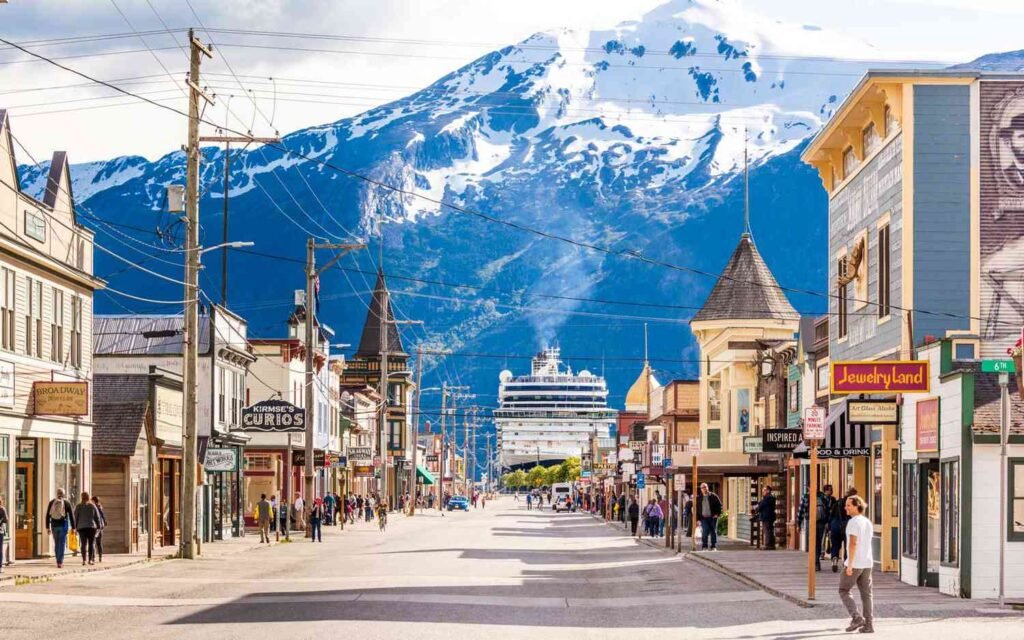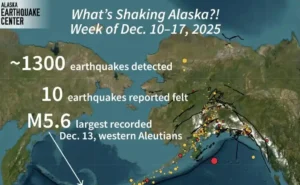Alaska, the Last Frontier, is a state unlike any other in the US. Its vast wilderness, majestic mountains, and abundant wildlife have captivated explorers and adventurers for centuries. But beyond the breathtaking scenery, Alaska is also home to a surprising diversity of cities, each with unique character and charm.
So, whether you’re looking for an exciting adventure or a rich cultural experience, Alaska has something for you. This guide will show you the beauty of seven Alaska cities, each a gateway to exploring the Last Frontier even more.
Must-Visit Cities in Alaska for Adventure and Culture
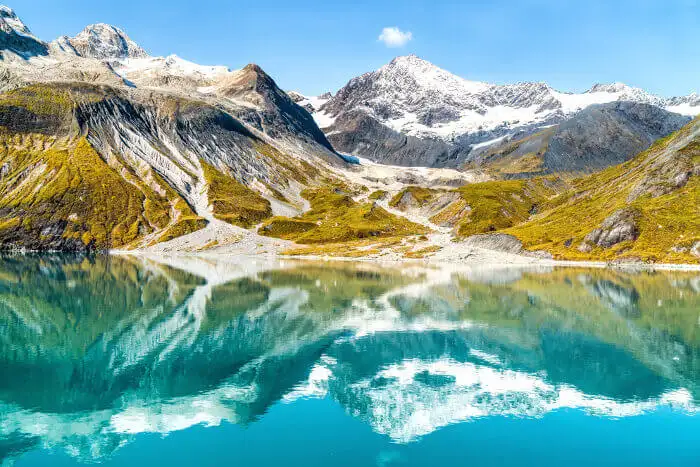
1- Bethel: A Remote Alaskan Gem
Bethel is a unique and remote city located in western Alaska. Known for its rich indigenous culture and strong community spirit, Bethel offers a glimpse into traditional Alaskan life away from the hustle and bustle of larger cities. It’s a hub for the surrounding Yukon-Kuskokwim Delta region, providing essential services and a connection to the outside world.
Geographical and Historical Background: Bethel is situated on the Kuskokwim River, about 400 miles west of Anchorage. It is accessible primarily by air and river, as no road connections exist to the rest of Alaska. The Yup’ik people have inhabited the area for thousands of years, and their cultural heritage is deeply embedded in the community. Bethel was established as a trading post in the late 19th century and has since grown into a critical regional center for commerce, health care, and transportation.
Climate and Best Time to Visit: Bethel experiences a subarctic climate, with long, cold winters and short, cool summers. Winter temperatures can drop to -20°F, and snow covers the ground from October to April. Summers are brief and mild, with temperatures ranging from the mid-50s to 60s (°F). The best time to visit Bethel is during the summer, from June to August when the weather is more pleasant for outdoor activities and cultural events. This period also provides the best opportunity to explore the surrounding wilderness and experience the traditional Yup’ik lifestyle.
2- Anchorage: The Heart of Alaska
Anchorage is one of the largest cities in Alaska. It is a bustling hub that offers a unique blend of urban sophistication and rugged natural beauty. With its stunning backdrop of mountains and coastline, Anchorage serves as the gateway to the Alaskan wilderness while providing all the modern city amenities.
Geographical and Historical Background: Anchorage is in south-central Alaska, nestled between the Chugach Mountains to the east and the Cook Inlet to the west. The city’s strategic location has made it a crucial transportation and trade hub since its founding in 1914. Initially established as a railroad construction port, Anchorage quickly grew due to the discovery of nearby resources like gold and oil. Today, it’s a vibrant city with a rich cultural heritage, reflecting its diverse population and historical significance.
Climate and Best Time to Visit: Anchorage experiences a subarctic climate characterized by long, cold winters and short, mild summers. Winter temperatures often dip below freezing, with snowfall common from October to April. However, summer brings warmer temperatures, averaging in the mid-60s (°F), and extended daylight hours, perfect for exploring the outdoors. The best time to visit Anchorage is during the summer, from June to August, when the weather is most favorable for outdoor activities, and the city hosts numerous festivals and events.
3- Juneau: Alaska’s Capital City
Juneau, Alaska’s capital, is a place where natural beauty meets rich history. Nestled in the heart of the Tongass National Forest, Juneiters offers stunning views, abundant wildlife, and a deep connection to indigenous cultures and Alaskan heritage. Despite its remote location, Juneau is a vibrant city with a thriving arts scene and a welcoming community.
Geographical and Historical Background: Juneau is located along the Gastineau Channel in southeastern Alaska. It is unique among U.S. state capitals because it is only accessible by boat or plane; no roads connect it to the rest of Alaska. Juneau was founded in 1880 during a gold rush and has grown from a mining camp into a vital administrative center. The city’s history is deeply intertwined with the Tlingit people, who have lived in the region for thousands of years, and their culture remains a significant part of Juneau’s identity.
Climate and Best Time to Visit: Juneau experiences a maritime climate, with mild, wet winters and cool, moist summers. Winter temperatures average around 20-30°F, with frequent snowfall. Summers are more relaxed than other parts of the U.S., averaging in the mid-60s (°F), with frequent rainfall. The best time to visit Juneau is from May to September when the weather is milder and outdoor activities such as hiking, whale watching, and glacier tours are at their peak. This period also coincides with the cruise ship season, bringing a lively atmosphere to the city.
4- Fairbanks: Gateway to Alaska’s Interior
Fairbanks, often called the “Golden Heart City,” is a vibrant hub in Alaska’s interior. Located 360 miles north of Anchorage, it is known for its rich history, rugged wilderness, and unique blend of urban amenities and frontier spirit. It is a gateway to the Arctic and a popular destination for those seeking adventure and natural beauty.
Geographical and Historical Background: Fairbanks is situated on the banks of the Chena River, surrounded by vast wilderness and the peaks of the Alaska Range. Founded in the early 20th century during the gold rush, Fairbanks quickly grew into a prosperous mining town. Today, it is the second-largest city in Alaska and a commerce, transportation, and education center. The city’s history is intertwined with the Athabascan people, who have inhabited the region for thousands of years and have a strong cultural influence.
Best Time to Visit: Fairbanks experiences a subarctic climate characterized by long, cold winters and short, warm summers. Winter temperatures can plummet to -40°F, while summer temperatures can reach the 70s (°F). The best time to visit Fairbanks is during the summer, from June to August, when the days are long and temperatures are most comfortable for outdoor activities like hiking, fishing, and wildlife viewing. This period also offers the opportunity to experience the Midnight Sun phenomenon, where the sun remains visible around the clock in mid-summer.
5- Sitka: Where History Meets Natural Beauty
Sitka, nestled on Baranof Island in Alaska’s southeastern Panhandle, is a picturesque city renowned for its stunning coastal scenery and rich cultural heritage. Once the capital of Russian America, Sitka offers a blend of Russian, Tlingit Native American, and American influences, making it a fascinating destination for history buffs and outdoor enthusiasts.
Geographical and Historical Background: Sitka is located on the outer coast of Alaska’s Inside Passage, surrounded by lush forests and rugged mountains. The Tlingit people originally inhabited it before the Russians colonized it in the early 19th century. Sitka served as the capital of Russian America until 1867 when Alaska was sold to the United States. Today, remnants of its Russian heritage can still be seen in the city’s architecture and cultural traditions.
Climate and Best Time to Visit: Sitka experiences a maritime climate characterized by mild, wet winters and cool, damp summers. With frequent rain, winter precipitation typically ranges from the 20s to 40s (°F), and swimmers are more relaxed compared to other parts of Alaska, with temperatures averaging in the 50s and 60s (°F). The best time to visit Sitka is from May to September, when the weather is milder and the days are longer, allowing for exploration of Sitka’s outdoor attractions, such as hiking trails, wildlife viewing, and kayaking in its scenic bays.
6- Ketchikan: Alaska’s First City
Alaska’s First City, Ketchikan, is in the southeastern part of the Alaska Panhandle. It is known as the “First City” of Alaska because it was the first permanent European settlement in Alaska. Ketchikan is a popular tourist destination for those who want to experience Alaska’s Inside Passage and Tongass National Forest, the largest national forest in the United States.
Geographical and Historical Background: Ketchikan is located on Revillagigedo Island, in the southeastern part of Alaska’s Panhandle. Surrounded by the Tongass National Forest and bordered by the Tongass Narrows, Ketchikan was established as a fishing and logging community in the late 19th century. It has since grown into a popular cruise ship destination and a hub for tourism, fishing, and timber industries.
Climate and Best Time to Visit: Ketchikan experiences a maritime climate characterized by mild, wet winters and cool, damp summers. With frequent rainfall, winter temperatures typically range from mid-20s to 40s (°F). Summers are mild, with temperatures averaging in the 50s and 60s (°F), and occasional sunny days. The best time to visit Ketchikan is from May to September when the weather is more favorable for outdoor activities such as hiking, fishing, and wildlife viewing. This period also coincides with the peak cruise ship season, bringing a lively atmosphere to the city’s waterfront and downtown areas.
7- Kodiak: Alaska’s Emerald Isle
Kodiak, often called Alaska’s Emerald Isle, is a rugged and picturesque island in the Gulf of Alaska. Known for its stunning landscapes, abundant wildlife, and rich cultural heritage, Kodiak offers visitors a unique blend of outdoor adventures and cultural experiences.
Geographical and Historical Background: Kodiak Island is the second-largest island in the United States, located on the Alaska mainland. The Alutiiq people have inhabited it for over 7,000 years, and our cultural traditions are still preserved in the community today. The island’s history is intertwined with the Russian colonization era, as Kodiak was the first capital of Russian Alaska. Today, Kodiak is a thriving fishing community and a gateway to the Kodiak National Wildlife Refuge, home to diverse wildlife, including bears, eagles, and marine mammals.
Climate and Best Time to Visit: Kodiak experiences a subpolar oceanic climate characterized by cool, wet winters and mild, damp summers. Winter temperatures average in the 20s to 30s (°F), with frequent rainfall and snowfall in higher elevations. Summers are superb, with temperatures ranging from the 50s to 60s (°F) and occasional sunny days. The best time to visit Kodiak is from June to August when the weather is milder and more conducive to outdoor activities such as fishing, hiking, and wildlife viewing. This period also offers opportunities to experience Kodiak’s cultural events and festivals, showcasing its rich history and vibrant community life.
Key Highlights of Each City With New Insights:
- Anchorage is Anchka’s largest city and hosts the state’s largest cultural events, including the Anchorage Market & Festival, which showcases local arts and crafts.
- Juneau: Juneau is not just Alaska’s capital but also the only U.S. state capital inaccessible by road, offering unique travel experiences by air or sea.
- Bethel: Bethel is a hub for traditional Yup’ik dancing and drumming, with annual events like the Cama-i Dance Festival celebrating Indigenous culture.
- Fairbanks: Fairbanks is renowned for its aurora borealis displays and offers some of the world’s best northern lights viewing opportunities.
- Sitka: Sitka is home to the Sitka Summer Music Festival, a renowned classical music event that attracts musicians and enthusiasts from around the globe.
- Ketchikan: Ketchikan is famous for its Creek Street, a historic boardwalk built over water. Now, with shops, galleries, and restaurants, it offers a glimpse into its colorful past.
- Kodiak: Kodiak boasts the Kodiak Crab Festival, an annual celebration featuring crab races, local seafood, and cultural performances, drawing visitors to its lively waterfront.
Essential Travel Tips for Your Last Frontier Adventure
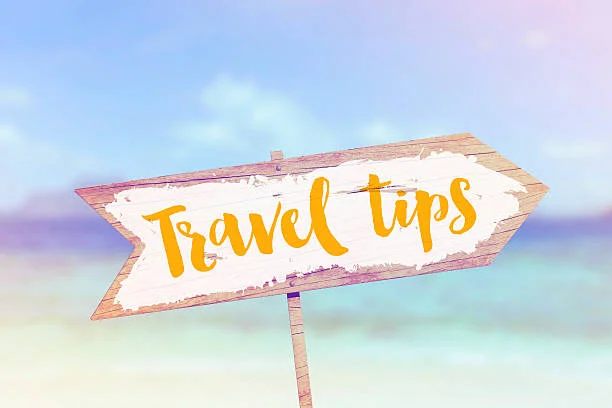
Alaska’s towering mountains, stunning glaciers, and diverse wildlife invite travelers with their wild beauty. Before you begin your Alaskan journey, careful planning is essential. These crucial travel tips will ensure your unforgettable adventure in the Last Frontier.
Choosing the Perfect Time:
Alaska’s diverse climate offers distinct experiences throughout the year. Here’s a breakdown to help you decide:
- Summer (June – August): The peak season boasts long days with up to 20 hours of daylight (perfect for midnight sun adventures!), comfortable temperatures ideal for hiking and outdoor activities, and abundant wildlife sightings. However, expect higher prices and larger crowds.
- Shoulder Seasons (May & September): These offer a delightful balance. You’ll encounter fewer crowds, find better deals on accommodations, and still enjoy pleasant weather for sightseeing. May provides opportunities to witness spring migrations, while September boasts stunning fall foliage.
- Winter (December – March): Alaska transforms into a winter wonderland. Experience the awe-inspiring aurora borealis (northern lights), participate in thrilling winter sports like dog mushing and ice carving, and witness breathtaking landscapes adorned in a pristine white blanket. However, be prepared for sub-zero temperatures and limited daylight hours.
Packing for Every Possibility:
Alaska’s weather can be unpredictable, so pack versatile layers. Here’s your essential packing list:
- Base Layers: Moisture-wicking thermals for warmth and breathability.
- Insulating Layers: Fleece jackets or sweaters for added insulation.
- Waterproof Shell: A good rain jacket and pants are crucial for unexpected showers.
- Hiking Boots: Sturdy, waterproof boots with good ankle support for exploring uneven terrain.
- Warm Hat, Gloves, and Scarf: A must-have for any season, especially in winter.
- Sunglasses and Sunscreen are essential year-round to protect yourself from the sun’s rays, especially during the reflective winter months.
- Insect Repellent: Keep pesky mosquitos at bay, particularly during summer months.
- Bathing Suit: If you plan to soak in natural hot springs or geothermal pools.
- Camera: Capture the awe-inspiring beauty of Alaska’s landscapes and wildlife.
- Binoculars: Binoculars are used to promote wildlife views.
- Reusable Water Bottle: Stay hydrated throughout your adventures.
Bonus Tip: Always check the weather forecast before your trip and pack accordingly. Remember to pack for potential flight cancellations or delays, which can sometimes occur due to unpredictable weather conditions.

